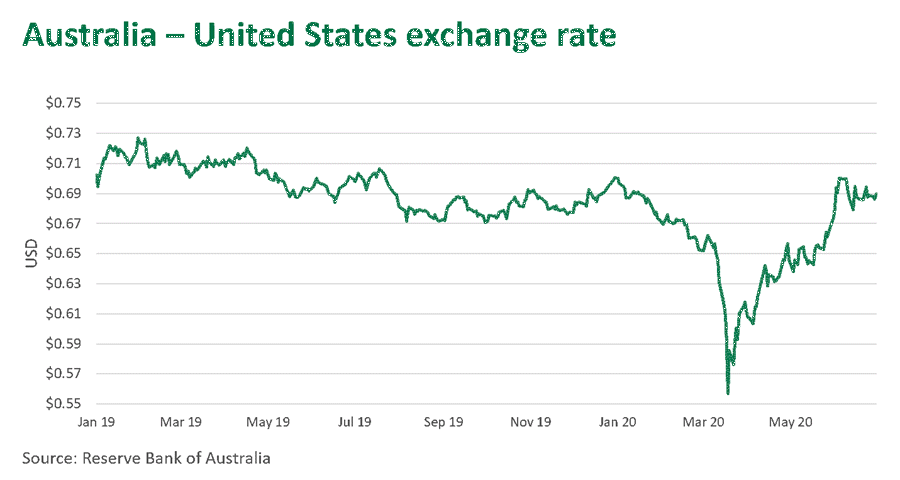Given Australia exports around 70% of its beef and close to 65% of its sheepmeat, currency movements can have a significant impact on farm gate prices. The Australian dollar has seesawed in 2020, largely against the US dollar, as volatility in global markets has affected investor sentiment.
Back in March, amid heightened global uncertainty as COVID-19 cases accelerated, and the virus’s increasingly calamitous impact on the global economy, investors turned towards safe-haven assets, such as gold and the US dollar. The depreciation of the Australian dollar was sharp, plummeting to US57¢ in mid-March, the lowest level in 17 years.
However, the Australian dollar has recovered most of its losses, underpinned by successful control measures in Australia and escalating uncertainty in the US, with lockdowns currently being reinstated in certain US states. One Australian dollar is currently valued at US69¢, 21% higher since March and almost identical compared to year-ago levels.

Ordinarily, a depreciation in the Australian dollar would benefit Australian red meat exporters, as products become more attractive to overseas importers. However, on the back of COVID-19, the demand picture and general consumer confidence is somewhat offsetting any benefit gained from a weaker Australian dollar. Despite the recent lift, the Australian dollar still remains at a favourable level.
Looking ahead, the GDP results of the June quarter are expected to be much worse than the 0.3% contraction experienced during the March quarter. Despite emerging confidence, volatility is likely to remain with COVID-19 cases and subsequent economic performance a key driver of investor sentiment. Forecasts from the ‘big four’ banks in Australia predict the dollar to range between US67¢–US70¢ by the end of 2020.
© Meat & Livestock Australia Limited, 2020
To build your own custom report with MLA’s market information tool click here.
To view the specification of the indicators reported by MLA’s National Livestock Reporting Service click here.







